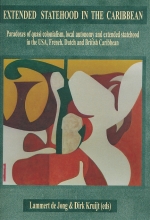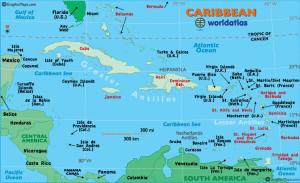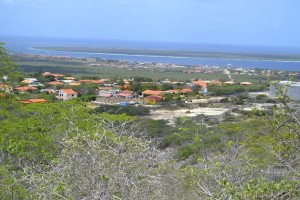African Slum Journal ~ Changing Faces Of Dandora
 ‘Changing faces in Dandora’. We speak with Sylvan Ayiecha, chairman of Tunawiri Self Help Group. Dandora has the name of the biggest dumpsite in the world, but it is time to make a change. Instead of idling around, the youth are volunteering to clean their spaces in the neighborhoods. They clean trenches, paint the houses, gates and schoolyards in fresh colors again. They make good and safe playgrounds for the school children. “When we can change the environment, we can change people’s minds”, says Paul Mureithi of Mustard Seed Court.
‘Changing faces in Dandora’. We speak with Sylvan Ayiecha, chairman of Tunawiri Self Help Group. Dandora has the name of the biggest dumpsite in the world, but it is time to make a change. Instead of idling around, the youth are volunteering to clean their spaces in the neighborhoods. They clean trenches, paint the houses, gates and schoolyards in fresh colors again. They make good and safe playgrounds for the school children. “When we can change the environment, we can change people’s minds”, says Paul Mureithi of Mustard Seed Court.
Read & see: http://www.africanslumjournal.com/changing-faces-of-dandora/
Extended Statehood In The Caribbean ~ Paradoxes Of Quasi Colonialism, Local Autonomy And Extended Statehood In The USA, French, Dutch & British Caribbean
2021 – PDF-file of the complete book: https://rozenbergquarterly.com/lammert-de-jong-dirk-kruijt-eds-extended-statehood-in-the-caribbean-paradoxes-of-quasi-colonialism-local-autonomy-and-extended-statehood-in-the-usa-french-dutch-and-british-caribbean/
2008 ~ Quite a number of islands in the Caribbean region have not yet gained independent status. They still have constitutional relationships with former colonial mother countries, be it Puerto Rico with the USA, the Netherlands Antilles and Aruba with the Netherlands, Martinique and Guadeloupe with the French Republic or the Caribbean Overseas Territories with Britain.
The status of the non-independent Caribbean remains ambiguous. None of the islands wish to stand on their own as sovereign states. A range of complexes is attributed to this (quasi) colonial status. They have sacrificed their cultural and political identities for a well-being that – by definition – cannot be fulfilled. The islands’ citizenry suffers from racial discrimination, not only at home, but also on the metropolitan mainland. And instead of exhausting every possibility to achieve sustainable development, a welfare mentality has overwhelmed the dynamics of the islands’ econonomies. Better off, yes, but at what price?
In this book, the islands’ connections with American and European metropolitan centers are considered lifelines which must be strengthened. The constitutional arrangement is defined as extended statehood, a form of government that is meant to supplement the island government. As de-colonization is not an option, it makes no sense to use alternative concepts such as dependency or re-colonization. These terms are biased and outdated. Circumstances have changed and require a format of analysis that goes beyond the old landscape of ‘colonies’ and ‘independent states’. The objective of this book is to promote a new look at extended statehood in the Caribbean while raising a number of questions relating to the operation of the different extended statehood systems across the region. What are their objectives? What is their mission? How are they organized? How do they operate? What are the advantages and what are the disadvantages? Are there any Gordian knots that cannot be solved?
The contributors to this book present a medley of interests in the Caribbean. Jorge Duany and Emilio Pantojas-Garica, University of Puerto Rico, describe the contradictions of Free Associated Statehood in Puerto Rico. Justin Daniel, University of the French Antilles and French Guiana (Martinique), contributed the part on the French Departement d’Outre mer (DOM)(Martinique and Guadeloupe). Peter Clegg, University of the West of England, Bristol, UK, delineates the United Kingdom’s relations with Caribbean Overseas Territories (COT). The chapter on the Kingdom of the Netherlands in the Caribbean is by Lammert de Jong, a former resident-representative of the Netherlands in the Netherlands Antilles. Francio Guadeloupe, University of Amsterdam, provided the introduction to anti-national pragmatism. Dirk Kruijt, Utrecht University, assisted in editing the volume.
Extended Statehood In The Caribbean ~ Paradoxes Of Quasi Colonialism, Local Autonomy And Extended Statehood In The USA, French, Dutch & British Caribbean. Lammert de Jong & Dirk Kruijt (Ed.). Rozenberg Publishers, Amsterdam 2005. ISBN 978-9051706864
Table of Contents
1. Lammert de Jong – Extended Statehood in the Caribbean: Definition and Focus.
2. Jorge Duany & Emilio Pantojas-Garcia – Fifty Years of Commonwealth. The Contradictions of Free Associated Statehood in Puerto Rico.
3. Justin Daniel – The French Departements d’outre mer. Guadeloupe and Martinique.
4. Lammert de Jong – The Kingdom of the Netherlands. A Not So Perfect Union with the Netherlands Antilles and Aruba.
5. Peter Clegg – The UK Caribbean Overseas Territories. Extended Statehood and the Process of Policy Convergence.
6. Francio Guadeloupe – Introducing an Anti-National Pragmatist on Saint Martin & Sint Maarten.
7. Lammert de Jong – Comparing Notes on Extended Statehood in the Caribbean.
About the authors
Extended Statehood In The Caribbean ~ Definition And Focus
Introduction
Quite a number of islands in the Caribbean region have not become independent states[i]. They still have constitutional relationships with former mother countries on the European or American mainland, which are commonly designated as dependency relationships. These relationships allow varying degrees of local autonomy and central control. Foreign affairs, international diplomacy and defense are to a large extent taken care of by the European partners or the USA. The islands’ judicial system is in one way or another integrated into the judicial system on the mainland and rules and regulations have to some extent been synchronized. Citizenship rights may have been extended, including metropolitan passports. If so, as USA or European passports holders, the islands’ residents often have unrestricted access to the metropolitan countries.
Caribbean territories that have not become independent nation-states are known under various labels: ‘dependent’, ‘non-independent’, ‘alternative post-colonial’, ‘nonsovereign’, ‘colonies’, ‘protectorates’, ‘subordinated’ or just ‘overseas territories’.[ii] These islands continue to maintain a constitutional arrangement with former colonial motherlands. This constitutional arrangement is defined in this study as extended statehood, a form of government that is meant to supplement the island government. The questions that are dealt with in this book are related to the operations of different extended statehood systems. What is their mission? How do they vary? How are they organized? How do they operate? What are the downsides and bottlenecks, what are the advantages?
Throughout this book the concept of extended statehood systems is applied. The system concept does not imply that extended statehood in the Caribbean is a systematic, well defined, well organized and well coordinated arrangement. It is merely used as a marker to distinguish arrangements between metropolitan countries on the one hand and Caribbean territories on the other: USA – Puerto Rico, the Netherlands – the Netherlands Antilles and Aruba, France – Départements d’outre mer (DOM), and the United Kingdom – Caribbean Overseas Territories. Actually, one of the more significant questions to be raised in this book is how systematic extended statehood in the Caribbean is set up and institutionalized over the last decades.
Alternatives to Independence[iii]
The argument developed in this book is based on the assumption that further decolonization is a non-option. Thus, it makes little sense to qualify the ongoing process of statehood development as a matter of de-colonization or re-colonization.[iv] These terms are biased and outdated; they do not confer a better understanding of the options of extended statehood. References to colonial times and mores do not encourage a new look at statehood development in the Caribbean. Circumstances have changed and require another format of analysis than that found in the old landscape of colonies and independent states. This is not a startling new approach. Already in 1984, a study on the constitutional relationship between Puerto Rico and the United States (of more than 1500 pages) was titled: ‘Breakthrough from Colonialism: an Interdisciplinary study of statehood’.[v] In 1997 a collection of essays was published about ‘rethinking colonialism and nationalism’ with regards to the Estado Libre Asociado of Puerto Rico.[vi] Another study, ‘Islands at the Crossroads’ (2001), calls also for rethinking of politics in the nonindependent territories.[vii] Hintjens wrote in 1995 about alternatives to independence, and in 1997 about the end of independence.[viii] What may be even more telling is that the independence movements on the islands do not attract large followings; their significance is marginal.[ix] For instance, in Puerto Rico.s elections and plebiscites, the percentage for the independence option varied between 19.6% in 1952 to 4.4% in 1993 (in 1964 and 1968 it was a mere 2.8%).[x] A plebiscite in the Netherlands Antilles recorded in 1993/1994 that less than 1% of the voters on the islands of Curaçao, Bonaire, Saba and Sint-Eustatius opted for independence; on Sint-Maarten independence attracted 6.3%.[xi] In a referendum in 2004 14% of the voters on Sint Maarten opted for independence while just less than 5% did that on Curaçao (in 2005). For many a Caribbean scholar and for the large majority ofvoters, independence is no option. Thus the questions to be dealt with are not about independence but rather those that relate to extended statehood arrangements currently in place, how do they work and how can they be put to better use in a highly interactive global world where more and more nation-states have become part of supranational arrangements. Extended statehood will be considered in this study as an arrangement that may prevent these islands from becoming isolated. Read more
Extended Statehood In The Caribbean ~ The French Départements D’Outre Mer. Guadeloupe And Martinique
 Introduction
Introduction
In 1946, the French Antilles inaugurated a heterodox process of ‘decolonization through institutional assimilation’. A long historical movement, initiated during the early periods of colonization, made of rupture and discontinuities but sustained by a universalist ambition, found its ultimate consecration in the so-called law of assimilation of 19 March 1946. A new expression – Overseas Department (Département d’outre mer, or DOM) – enriched the juridical-political vocabulary, pointing out both the geographical and historical difference as well as the similarity of political and administrative structures with the Départements of the Metropole. Guadeloupe, Martinique, and Réunion located in the Indian Ocean, and French Guiana situated between Surinam and Brazil in northern South America, became part of the ‘Four Oldest Colonies’. They were integrated within metropolitan France and have been regarded as European territories since 1957.
Départementalisation is another term used to refer to institutional assimilation, while highlighting the unfinished character of the assimilation process. That notion applies not only to institutions, but also to people, from a juridical and a cultural point of view.[i] From a historical perspective, the 1946 départementalisation thus achieves the synthesis contemplated by the reporter of the Constitution of the year III (1795), Boissy d’Anglas,[ii] stemming from a dual question: is it necessary to implant in the ‘Oldest Colonies’, independently from the locally expressed will, an administrative system identical to the current one of the mainland (assimilation of institutions)? Is it necessary to extend to the whole population of these colonies an identical system of values and juridical norms as of the mainland, thereby enlarging the circle of members of the ‘motherland’ (assimilation of people)? Such a colonial doctrine, which originated from the concept of a unified French State, had the tendency to deny all public expression of identity other than its own, and to marginalise all the others for the benefit of citizen allegiance.
Nevertheless, such a claim that so closely associates legal assimilation and cultural assimilation, is a source of many paradoxes that anthropologists have researched for a long time. Supported by an assimilationist ideal in which deep traces of the Ancient Regime are still perceptible, and fed on a universalist claim that the revolutionary heritage continuously reinforced, the colonial project that ensued was no less than a ‘tremendous difference-producing machine’.[iii] The bringing together of peoples from extremely diverse backgrounds to form societies – according to a historical trajectory of a most remarkable nature – was a strong factor in the creation of cultural and social spaces which kept the assimilationist dynamic at bay. It is then indisputable that the French colonial device and the French State had long been resistant to any form of cultural and political autonomy. Nonetheless, these forces emerged and did so without strict alignment to metropolitan norms. Read more
Extended Statehood in the Caribbean ~ Fifty Years of Commonwealth ~ The Contradictions Of Free Associated Statehood in Puerto Rico
 July 25, 2002 marked the fiftieth anniversary of the Constitution of the commonwealth of Puerto Rico. A Spanish colony until 1898, the Island became an overseas possession of the United States after the Spanish-Cuban-American War. In 1901, the U.S. Supreme Court defined Puerto Rico as an unincorporated territory that was ‘foreign to the United States in a domestic sense’ because it was neither a state of the American union nor a sovereign republic.[i] In 1917, Congress granted U.S. citizenship to Puerto Ricans, but the Island remained an unincorporated territory of the United States. In 1952, Puerto Ricobecame a Commonwealth or Free Associated State (Estado Libre Asociado, in Spanish).[ii]
July 25, 2002 marked the fiftieth anniversary of the Constitution of the commonwealth of Puerto Rico. A Spanish colony until 1898, the Island became an overseas possession of the United States after the Spanish-Cuban-American War. In 1901, the U.S. Supreme Court defined Puerto Rico as an unincorporated territory that was ‘foreign to the United States in a domestic sense’ because it was neither a state of the American union nor a sovereign republic.[i] In 1917, Congress granted U.S. citizenship to Puerto Ricans, but the Island remained an unincorporated territory of the United States. In 1952, Puerto Ricobecame a Commonwealth or Free Associated State (Estado Libre Asociado, in Spanish).[ii]
The Commonwealth Constitution provides limited self-government in local matters, such as elections, taxation, economic development, education, health, housing, culture, and language. However, the U.S. government retains jurisdiction in most state affairs, including citizenship, immigration, customs, defense, currency, transportation, communications, foreign trade, and diplomacy.
In this chapter, we analyze the socioeconomic costs and benefits of ‘associated free statehood’ in Puerto Rico. To begin, we describe the basic features of the Commonwealth government, emphasizing its subordination to the federal government. Second, we examine the impact of the Island’s political status on citizenship and nationality, which tend to be practically divorced from each other for most Puerto Ricans. Third, we focus on the cultural repercussions of the resettlement of almost half of the Island’s population abroad. Fourth, we review the main economic trends in the half-century since the Commonwealth’s establishment, particularly in employment, poverty, and welfare. Fifth, we recognize the significant educational progress of Puerto Ricans since the 1950s, largely as a result of the government’s investment in human resources. Sixth, we assess the extent of democratic representation, human rights, and legal protection of Puerto Ricans under the current political status. Finally, we identify crime, drug addiction, and corruption as key challenges to any further development of associated statehood in Puerto Rico. Our thesis is that the Estado Libre Asociado has exhausted its capacity to meet the needs and aspirations of the Puerto Rican people, a task that requires a major restructuring of U.S.-Puerto Rico relations.
Over the past decades, the three major political parties – as well as the majority of the Puerto Rican electorate – have expressed a desire to reform Commonwealth status. Major differences of opinion remain regarding how exactly to complete the Island’s decolonization, whether through independence, enhanced autonomy, or full annexation to the United States. Read more
Extended Statehood In The Caribbean ~ The Kingdom Of The Netherlands. A Not So Perfect Union With The Netherlands Antilles And Aruba
Introduction
Het Statuut[i], the Constitution of the Kingdom of the Netherlands, was formalized in 1954 on December 15. It defines the Kingdom as a federal state of three autonomous countries, the Netherlands in Europe and two countries in the Caribbean, the Netherlands Antilles, comprising six islands, and Suriname. In 1975 Suriname left the Kingdom and became an independent country. Aruba, after obtaining a long coveted status aparte in 1986, seceded from the Netherlands Antilles but remained part of the Kingdom as a separate country.
As of December 2004, Het Statuut had lasted half a century, a respectable age. It has weathered the times without changing colour, but now its future seems blurred. At its inception, Het Statuut was not meant to be a constitution that would forever define the domain of a Kingdom of the Netherlands with one part in Europe and another in the Caribbean. From the outset it was believed that one day the Caribbean countries would become independent. For Suriname that day came in 1975. However, for the Netherlands Antilles and Aruba that day may never come. The Antillean public and its political representatives value the current constitutional arrangement of the Kingdom, though with mixed blessings, diverse feelings and complex attitudes. In anticipation of the constitutional anniversary of Het Statuut some uneasiness surfaced, both in the Netherlands as well as overseas. Was it a time of celebration and, if so, how and what to celebrate?[ii] Some authorities were concerned that the anniversary could become a testimonium paupertatis of the operations of the Kingdom in the last 15 years, adding another obstacle to the problematical state of the Caribbean affairs of the Kingdom. In the Dutch press, the Netherlands Antilles were reported as a lost case; a Caribbean democracy that has turned into a Dutch banana republic (sic) in the West Indies.[iii] In April 2004, the Governor of the Netherlands Antilles depicted the crisis his country is experiencing as one of widespread and profound poverty, too many school dropouts with no prospects, increasing drug trade that is derailing civil society, too many murders, muggings and burglaries and a frightening high proportion of criminals.[iv] The number of homicides on Curaçao is staggering and 30 xs higher than in the Netherlands.
The celebrations went ahead, especially in The Hague where on 15 December 2004 the highest officials of all three countries gathered in presence of HM the Queen of the Kingdom. A special coin was issued to commemorate the event.
A Constitution that was not meant for the Caribbean[v]
When the outlines of a post-colonial order were being drawn, at the end of World War II, the Netherlands did not distinguish between its different colonized territories, which included the immense Indonesian archipelago in the East, as well as the small territories in the Latin American hemisphere of Surinam and the Dutch West Indies in the Caribbean. In the process of de-colonization all the territories were simply lumped together. After World War II ended and Japan had capitulated, Indonesia declared itself independent, an act that stunned the Netherlands. The unilateral declaration of Indonesian independence was fought with the sword. Those new to world power, particularly the United States of America, did not agree and eventually forced the Dutch to negotiate with the Indonesian nationalists. The Netherlands attempted to keep Indonesia within the Kingdom by proposing a form of postcolonial federal union. It was thought that a free association of autonomous states could pacify the ambitions of the independence movement. The Indonesian nationalistic powers, however, would not compromise and after four years of war and several round table conferences the government of the Netherlands formally bent to the will of history. The strength and appeal of Indonesia’s independence movement had been misread and could not be
contained within a liberal post-colonial Charter that aimed to keep Indonesia within the Kingdom. Indonesia.s independence marked the end of the Dutch empire.
After Indonesia pulled out of the Kingdom, Surinam and the Netherlands Antilles reaped the fruits of the Netherlands’ attempts to keep Indonesia on board. The West-Indian countries had been party to the Netherlands promise, broadcast on December 6, 1942, by Queen Wilhelmina in exile in London, to de-colonize the Kingdom. The arrangements that were then conceived had not been meant for these much smaller territories. The Caribbean territories, however, would not budge on the concept of a free association of autonomous states as the heir to the colonial Kingdom and stuck to the original liberal terms of the Charter of the Kingdom-to-be. The Caribbean countries claimed autonomy, not independence. They aimed to be partners on equal footing with the Netherlands and succeeded, at least on paper, when in 1954 a new Charter of the Kingdom was enacted. This Charter included the rule that any changes require the unanimous consent of the parties involved. The Netherlands gave in to the aspirations of these small states, believing at the time that there was neither much to gain nor much to lose. The empire was already gone. Moreover, the Charter was not meant for eternity; one day the Caribbean countries would become independent. Read more




